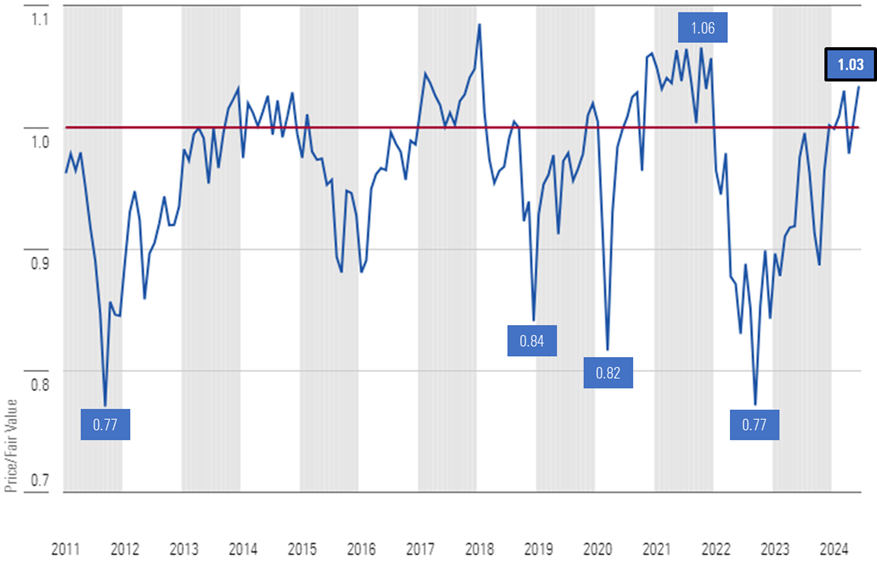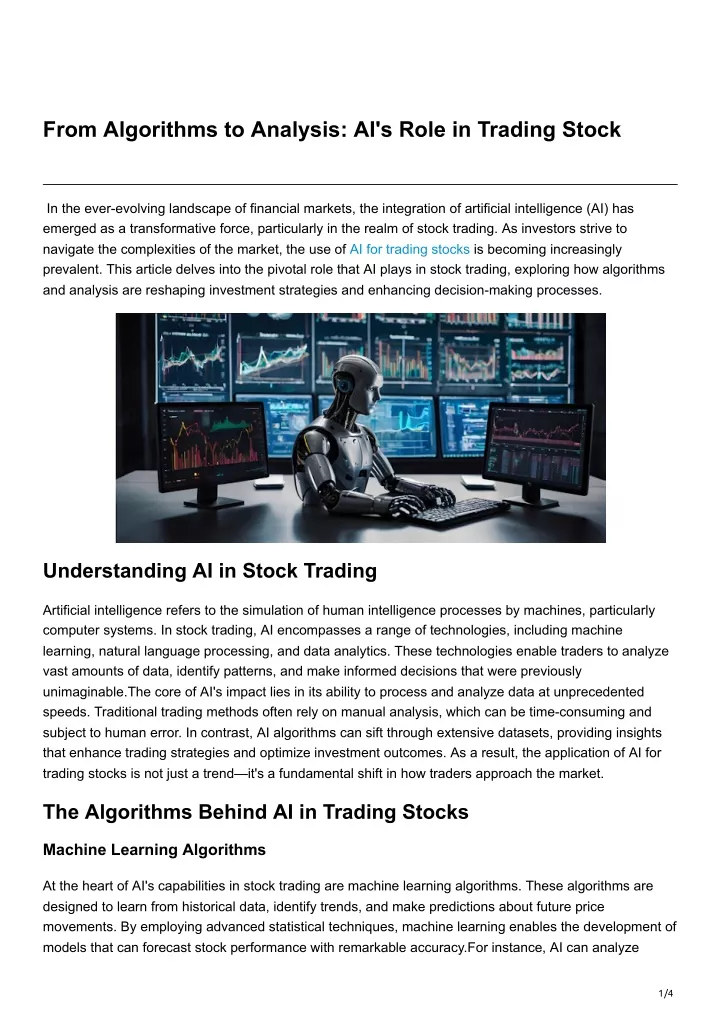20 Handy Pieces Of Advice For Picking AI Stock Trading Websites
20 Handy Pieces Of Advice For Picking AI Stock Trading Websites
Blog Article
Top 10 Tips For Evaluating The User Interface And Experience Of Ai Platform For Predicting And Analyzing Stocks
The User Interface (UI) as well as User Experiences (UX) in AI trading platforms that forecast or analyze the price of stocks play an important role in ensuring efficiency and satisfaction. An undesigned interface could hinder decision-making, even if the core AI models are robust. These are the top 10 suggestions for evaluating the UX/UI of these platforms:
1. Evaluation of intuitiveness and ease of use
Navigation: Make sure the platform is simple to use, using buttons and menus that are simple to comprehend and workflows that are easy to follow.
Learning curve: Identify how quickly new users can learn and operate a platform without any extensive training.
Consistency: Seek out designs that are consistent (e.g. buttons, color schemes, etc.) across the whole platform.
2. Check for Customizability
Dashboard customization: Find out if dashboards can be customized to display data, charts and metrics that are relevant for the user.
Layout flexibility: The platform should let users rearrange, resize or move widgets.
Themes: Determine whether your platform supports dark or light mode or any other visual preferences.
3. Visualize data easily
Chart quality: Ensure the platform provides high-quality, interactive charts (e.g., line charts, candlestick charts) with zoom and pan functionality.
Visual clarity: Ensure that the data are presented clearly with labels, legends, and tooltips.
Real-time Updates: See whether your graphs are updated with the latest market information.
4. Test Responsiveness & Speed
When working with massive data sets and complex calculations, the system should be able to load fast.
Real-time performance: Check whether your system is able to handle feeds of data which are updated in real-time without lags or delays.
Cross-device compatibility: Check if the application works flawlessly across devices (desktop tablet, mobile).
5. Assess the accessibility
Mobile App: Ensure that the platform offers an application for trading via mobile that is fully functional.
Keyboard shortcuts - Ensure that your platform supports keyboard shortcuts that are available to power users.
Accessibility features: Verify whether the platform is compliant with accessibility standards (e.g., screen reader support or high-contrast mode).
6. You can sort and search your results.
Searching functionality: Ensure that your platform permits you to quickly search for indexes, stocks, and various other assets.
Advanced filters: Check whether you can narrow your results by using filters (e.g. sector, market capital, performance metrics).
Saved searches - Make sure that the platform permits you to save frequently used filters or searches.
7. Be sure to check for alerts, notifications and other information
Customizable alarms: Ensure that users are able to set up alerts for specific conditions.
Delivery of notifications: See if alerts can be delivered via multiple channels (e.g. SMS, email and app notifications).
Check for promptness and the accuracy of alarms.
8. Examine Integration with Other Tool
Broker integration - Ensure that your platform is seamlessly integrated with your brokerage, allowing the quick execution of trades.
API access: Find out whether the platform allows API access to advanced users to develop customized workflows or tools.
Third-party interfaces: Verify whether the platform offers integrations with third-party tools (e.g. Excel or Google Sheets) and trading robots.
9. Assess Help and support Features
Tutorials on Onboarding. Check if new users can access tutorials.
Help center: Ensure that the platform offers a comprehensive knowledge base or help center.
Support for customers - Find out if the platform has a prompt support (e.g. email, live chat).
10. Test Overall User Satisfaction
Feedback from users Research and testimonies to determine the satisfaction of customers.
Trial period: Make use of a no-cost demo or trial period to assess the usability of the platform.
Error handling: Check how the platform handles errors and edge instances (e.g., invalid inputs and server downtime).
Bonus Tips
Aesthetics. While practical design is essential, an appealing visual design can enhance user experience.
Performance under stress: Make sure the platform is stable and responsive during times of market volatility.
Check whether the platform has a user community where users can exchange feedback and offer tips.
Use these guidelines to evaluate the UI/UX for AI platform for analyzing and predicting stocks. This will help ensure that they are efficient and user-friendly. They should also be in line with the needs of trading. A great UI/UX will assist you make better choices and help you execute your trades more efficiently. Take a look at the recommended recommended reading on ai chart analysis for site advice including AI stock trading app, ai investment platform, AI stocks, AI stock trading bot free, AI stock trading app, ai for trading, investing ai, AI stock trading bot free, best ai trading app, stock ai and more.
Top 10 Tips To Evaluate The Educational Resources Of AI stock Predicting/Analyzing Trading Platforms
To understand how to best use, interpret and make informed trading decisions, users must assess the educational tools made available by AI-driven prediction systems and trading platforms. Here are ten top tips for evaluating these resources.
1. Comprehensive Tutorials & Guides
Tip: See if there are tutorials or user guides for advanced and beginner users.
The reason: Clear and concise instructions assist users navigate the platform and comprehend its capabilities.
2. Webinars Video Demos and Webinars
Look out for video demonstrations or webinars, or live sessions.
Why? Interactive and visually appealing content helps you understand complex concepts.
3. Glossary
Tip: Check that the platform offers a glossary with definitions and important terms associated with AI as well as finance and many other areas.
Why: This helps all users, but especially those who are new to the platform, understand terminology.
4. Case Studies and Real-World Examples
Tip. Check whether the platform has case studies that show how AI models were applied to real-world situations.
Practical examples can be used to illustrate the effectiveness of the platform and allow users to connect with the applications.
5. Interactive Learning Tools
Take a look at interactive tools including simulators, quizzes or sandboxes.
Why: Interactive tools are an excellent way to gain experience and test your knowledge without the need to invest cash.
6. Content that is regularly updated
TIP: Make sure that the educational materials are updated regularly to keep up with new features, market trends or changes in the regulatory environment.
Why: Outdated data can lead to misinterpretations or incorrect application of the platform.
7. Community Forums Help
Join active forums and support groups where you can ask questions or share your knowledge.
The reason Support from peers and expert guidance can improve learning and solving problems.
8. Accreditation or Certification Programs
Find out if there are any certification programs or training courses that are accredited offered on the platform.
What is the reason? Recognition of learners' learning could motivate them to study more.
9. User-friendliness and accessibility
Tips: Assess the usability and accessibility of educational materials (e.g. mobile-friendly and downloadable pdfs).
Why: Easy accessibility allows users to study at their own speed.
10. Feedback Mechanism for Educational Content
Tips - Make sure you can provide your feedback to the platform on the educational material.
Why? User feedback is important for improving the quality of the resources.
Tips for learning: Make use of different learning formats
To meet the needs of different learners Make sure that the platform is able to accommodate different preferences. various learning options.
You can evaluate these elements to find out whether the AI trading and stock prediction software provides solid educational tools that can help you maximize its potential and make well-informed trading decisions. Read the top this post for best ai for stock trading for blog recommendations including AI stock predictions, ai for trading stocks, how to use ai for stock trading, chart analysis ai, ai trading tool, ai for trading stocks, ai tools for trading, chart analysis ai, AI stock investing, free AI stock picker and more.